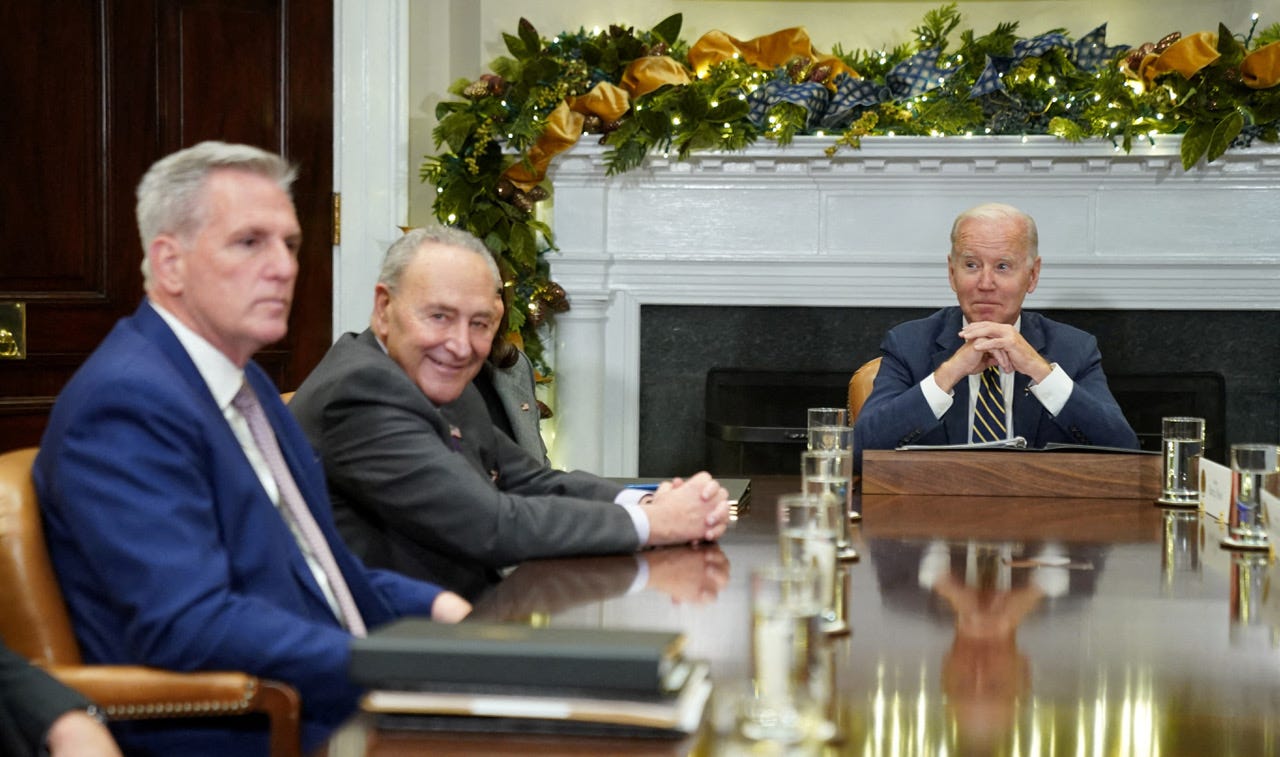The Exception That Proves the Rule
“I know firsthand how agonizing waiting can be.” – Joe Manchin
The political theater surrounding the US debt ceiling is puzzling—every dollar of federal government spending can eventually be traced back to a prior appropriation from Congress, making the subsequent need to separately authorize the US Department of Treasury to issue the debt that will fund what Congress has already approved mercilessly disjointed. Think the feds are spending too much money? Appropriate less! Uncomfortable with the growing annual deficit? Raise taxes! While these have become fraught political decisions, they directly address the fiscal challenges facing the country. What we have today is the functional equivalent of writing postdated checks and then threatening to let them bounce.
Our view on the matter notwithstanding, the world was once again forced to suffer through cries of existential uncertainty up to the very moment the two sides hammered out their most recent deal. According to Treasury Secretary Yellen’s team, “Congress has acted 78 separate times to permanently raise, temporarily extend, or revise the definition of the debt limit – 49 times under Republican presidents and 29 times under Democratic presidents.” With the recent passage of the latest bipartisan debt ceiling agreement in both the House and Senate, we can now mark it 79-for-79.
While rank-and-file members on both sides of the aisle bristled at some of the compromises in the deal—a sure sign that it was probably the best agreement that could have passed Congress—one section of the bill was a particular surprise to many. Section 324 of the unironically titled Fiscal Responsibility Act of 2023 grants specific approval to a critical piece of natural gas infrastructure that should be familiar to Doomberg readers. Here’s how Politico described it (emphasis added throughout):
“The text of the debt ceiling bill released on Sunday would approve all the remaining permits to complete the stalled Mountain Valley Pipeline, delivering a big win for West Virginia Sens. Joe Manchin and Shelley Moore Capito.
But the backing of the pipeline that would deliver gas from West Virginia into the Southeast is sure to set off bitter complaints from the environmental groups that have fought its construction for years and turned the project into a symbol of their struggle against fossil fuels.”
In many ways, the Mountain Valley Pipeline (MVP) is a quintessential example of all that is wrong with US energy policy. Even though this vital project is already 94% constructed and was originally approved more than five years ago, environmental extremists have spent countless millions in court fighting to reverse the approvals and kill completion. In essence, the MVP replaced the Keystone Pipeline as the battleground project.
As a measure of the pipeline’s importance to our national energy infrastructure, we turn to the preamble of Section 324 and discover Congress’s justification for mandating its completion:
“The Congress hereby finds and declares that the timely completion of construction and operation of the Mountain Valley Pipeline is required in the national interest. The Mountain Valley Pipeline will serve demonstrated natural gas demand in the Northeast, Mid-Atlantic, and Southeast regions, will increase the reliability of natural gas supplies and the availability of natural gas at reasonable prices, will allow natural gas producers to access additional markets for their product, and will reduce carbon emissions and facilitate the energy transition.”
While many pro-energy analysts are applauding this development, and environmental radicals are feigning outrage, the deed is now done, and it is time to assess the multifaceted impact of these events. How will the imminent completion of this project affect the US natural gas market? How does this episode reflect on the state of the US judiciary as it pertains to other badly needed infrastructure projects under development? Finally, what will the political reverberations be for the 2024 election cycle and beyond? Let’s investigate.



